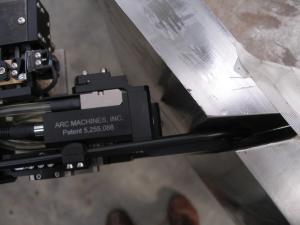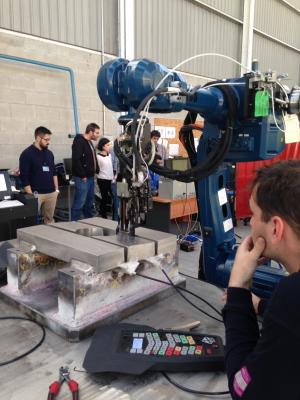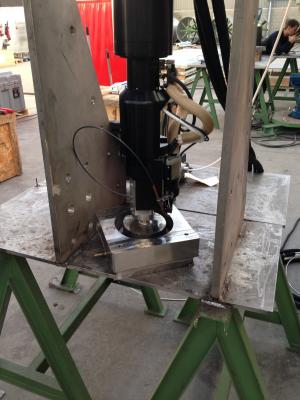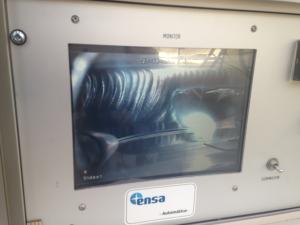The robots will also be confined to welding from
inside the vessel and ports, as the pre-installed vacuum vessel thermal shield makes access to the exterior surfaces impossible.
"One-sided welding is unusual and more challenging for welds of this thickness," says Brian Macklin, an engineer in ITER's Tokamak Assembly Section. "Customized equipment and techniques for welding, testing and examination are required. Weld shrinkage—which occurs naturally as weld material cools and solidifies—will have to be quantified and anticipated."
In 2012, the ITER Organization
awarded the full scope of vacuum vessel welding operations—from the development of tools and qualification of processes and operators, through tool procurement and execution of welding operations at the ITER site—to the Spanish company Equipos Nucleares SA (ENSA). Today, engineering development and trials are underway at ENSA premises in Maliaño and Parbayón, near Santander, Spain, where a 12-person ENSA team is testing prototype welding tools on mockups that reproduce relevant segments of the vacuum vessel or ports.
In one area, tests are underway on splice plate welding. The field joints between sectors or between sectors and ports require these transition pieces, which are custom machined to fit precisely. Welding robots will have to manoeuvre through the inner shell of the double-walled vacuum vessel to weld the splice plates of the outer shell, using narrow, custom-designed and custom-built welding torches. The tools are operated remotely, with cameras, screens and parameter monitoring to help the operators guide them through narrow gaps.





